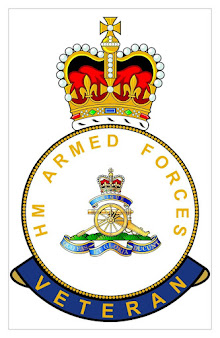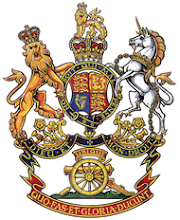 |
| Tynemouth Spanish Battery Sherlock IJ CG |
 |
| Tynemouth Castle Battery 12 pdr emplacement Sherlock CG IJ |
 |
| Tynemouth Castle Battery |
 |
| Tynemouth Castle Battery IJ and CG in the Magazine with Sherlock |
 |
| Tynemouth Priory Sherlock |
Ubique - Everywhere

A monastery on the Tynemouth headland was established in the 7th century when the late King of Northumbria, Oswine, was buried there. It flourished during the 8th and 9th centuries, however, it was the subject of four major raids during the 9th century, and in 875 it was destroyed.
The monastery was re-established in 1090, and new buildings constructed. The Priory was endowed with extensive lands, the rents and resources, notably coal, from which it prospered. This led to further development and expansion of the priory buildings.
 |
| Tynemouth Priory 1300 |
 |
| Tynemouth Priory 1450 |
 |
| Tynemouth Castle c1400 |
In 1534 Henry VIII broke away from the authority of the Catholic Church in Rome and established himself as the head of the Church of England. In 1536 Henry began the dissolution of the monasteries, appropriated their income and assets, removing them as a power base. Tynemouth Priory was dissolved in 1539, it's lands and possessions handed to the King, and the monastery closed.
The Priory became a military base as a staging post for the billeting and supply if forces engaged in war with Scotland.
| Tynemouth Priory Percy Chantry being used as a supply base |
The priory would be used as an ordnance depot during the Napoleonic Wars and barracks were built during the 19th century. Guns would be positioned on the headland, and in 1904 a purpose built battery was built as part of the defence of the Tyne from coastal attack. The priory building it's self would fall into ruin over the centuries.
 |
| Tynemouth Priory 1789 |
 |
| Tynemouth Priory 1880 |
 |
| Tynemouth Priory 1895 |
| Tynemouth Priory 2021 |
| Tynemouth Priory and entrance to Percy Chantry |
| Tynemouth Priory Percy Chantry entrance |
 |
| Tynemouth Priory Percy Chantry |
| Tynemouth Priory Percy Chantry |
| Tynemouth Priory Percy Chantry Stained glass windows |
| Tynemouth Priory Percy Chantry Stained glass windows |
The Whitley Bay War Memorial is located on the links in Whitley Bay near the Spanish City.
| Whitley Bay War Memorial and Spanish City |
| Whitley Bay War Memorial |
| Whitley Bay War Memorial |
The granite Cenotaph was unveiled on 15th July 1922 by the Duke of Northumberland.
 |
| Whitley Bay Cenotaph |
The Cenotaph bears bronze plaques recording the losses of the 1941-18 war. Additional plaques were added for those lost during the Second World War.
| Whitley Bay War Memorial Inscription Plaque |
A plaque on one of the bollards surrounding the memorial commemorates the loss of Trooper James Christopher Thompson killed in action in Helmand Provence Afghanistan, a Reservist from the 23rd Special Air Service Regiment.
| Whitley Bay War Memorial Tpr JC Thompson 23 SAS |
Gunner Edward James Cowan West died 21st July 1942 serving with 72 (Northumbrian) Field Regiment Royal Artillery. He is buried in Florence War Cemetwery, Italy.
CWGC Information - Gunner EJC Cowan West
===0===
ROYAL ARTILLERY
1914-19
Honourable Artillery Company
Private A Crawford
Royal Field Artillery
2nd. Lieut. Wally Brunstrom MC
Gunner James Isherwood
Bombardier JT Newton
Gunner Chester Potter
Gunner Cyril Strong MM
Gunner G Winham
Gunner EC Costar
Gunner WJ Milhench
2nd. Lieut. FHG Douglas Smith
Gunner Jos Aynsley
Gunner Andrew Scott
Royal Garrison Artillery
Gunner James Barker
2nd. Lieut. HW Cowen
Bombardier GW Husband
Gunner C Attwell
Bombardier Thomas W Ross
L/Corporal Stanley Warham
1939-1945
Lieutenant CC Baty
Signaller Raymond Berrystone
Gunner JL Gorman
Gunner John Grieves
Gunner David Heywood
Gunner KJ Lyall
Sergeant Geoffrey R Barr
Gunner Carl G Beckman
Lieutenant N Wison
Captain KW MacGregor
Gunner JH Orange
Sergeant Wilfred Harrison Storey
Gunner EJC West
Lieutenant Norman Wilson
Tynemouth Castle Battery is located within the confines of Tynemouth Castle and Priory. The infrastructure of the battery has been preserved and partially restored.
| Tynemouth Castle Battery |
 |
The battery was commissioned in August 1904, part of the Tyne Defences, which consisted of Tynemouth Castle Battery, Spanish Battery (Tynemouth) and Frenchmans Point Battery (South Shields)
The battery operated through the First and Second World Wars, but never engaged the enemy, its guns achieving the aim of deterring enemy ships attacking the Tyne. The advent of the Cold War saw the threat of jet aircraft and missiles reducing the requirement for coastal artillery. In 1956 coastal artillery units in the UK were disbanded and coastal batteries decommissioned.
The restored element of the battery consists of a 6inch gun with it's magazine.
The gun emplacement is built atop of the magazine and it would have been fed with shells and cartridges via hoists.
| 6 inch gun emplacement |
| Shell Storage |
| Cartridge Storage |
| Shell Hoist |
| Shell Hoist Ammunition awaiting hoisting to gun emplacement |
| Shell Hoist |
| Cartridges ready to be passed through to the cartridge hoist |
| Cartridge hoist |
| 6 inch gun |
| 6 inch gun breach |
Cliffords Fort is located on the River Tyne at North Shields Fish Quay Low Light and was the mainstay of the defence of the over for two hundred years.
Gun emplacements at Tynemouth Castle and the Spanish Battery defended the entrance to the Tyne from 1545. During the English Civil War a temporary fort was was built at the Fish Quay location from gabions, sand filled baskets, and was destroyed during the conflict.
During the Second Anglo Dutch War (1665-1667) the Dutch fleet attacked the British fleet at anchor at Gillingham and Chatham, bombarding and capturing Sheerness before withdrawing. Concerned that the Dutch could affect the strategic coal trade between Newcastle and London, Charles II commissioned a new fort at the narrowest part of the entrance to the River Tyne. It was completed in 1672 and named after Thomas Clifford who became Lord Treasurer.
 |
| Cliffords Fort 1750 |
 |
| Cliffords Fort 1788 |
The armaments during the Napoleonic Wars consisted of 32 x 18 pounder / 8 x 12 pounder and 11 x 9 pounder cannons.
 |
| Cliffords Fort 1828 |
| Cliffords Fort Gun Battery |
| Cliffords Fort Gun Port |
| Cliffords Fort Cannon |
| Cliffords Fort Cannon |
As the Tyne developed economically during the 19th century, the need arose to provide better protection for shipping entering the river. In 1854 building began on two piers to enclose the Tyne estuary.
As the building of the piers progressed, the mouth of the Tyne moved seaward rendering the defences at Cliffords Fort obselete. In 1881 it ceased operation as a gun battery. The Tyne Piers were completed in 1895.
 |
| Cliffords Fort and Tyne Piers |
The track from the mine storage was made by breaching the forts rampart, and traces of the track can still be seen.
 |
| Cliffords Fort rampart breach and track |
| Cliffords Fort rampart breach and track bed |
Cliffords Fort was decommissioned in 1928 and the Tyne Electrical Engineers moved to New Cliffords Fort next to Tynemouth Station.


Hugh Dennis IJ On 10th March 2021, the TV programme the Great British Dig featured Trow Point , ...













